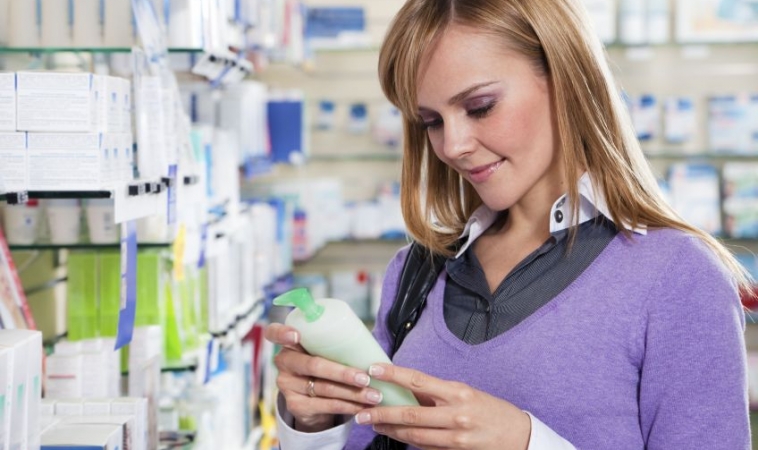The Cost Of Beauty


Originally published December 3, 2014 at naturalpath.com
A haze of toxins surround Americans every day – dust in our homes, air we breathe, rain that falls upon us, and water flowing out of the faucet. Fabrics we place on our bodies and carpets our toddlers crawl on are also contaminated with numerous harmful chemicals. There is only so much control we have over the environment surrounding us, but what we choose to put on our skin is a different story. Unfortunately, the products that we place on our bodies daily may be exposing us to numerous toxins each day.
Most Americans have seen the labels touting “No Sodium Laurel Sulfate” or “Paraben Free.” What most Americans do not know is that this labeling is completely voluntary and self-evaluated by the Cosmetic Ingredient Review. Although cosmetics are technically regulated by the US Food and Drug Administration (FDA), regulated is a term that is used loosely. The FDA has three rules regulating cosmetic companies. 1. There can be no use of the adulterated ingredients. 2. Color additives must be approved for their intended use previous to placement in cosmetics. 3. Cosmetic products must be safe when used and it is the legal responsibility of the cosmetic company to determine their safety status.1
The lack of regulation came to my attention last summer. Although I know to buy certain sun block and am wary of long lists of ingredients, I didn’t realize how much oversight the Federal Food, Drug and Cosmetic Act lacked. It was only when I hurriedly picked up baby powder at the pharmacy that I recognized something was very wrong. When using the baby powder, I noticed the main ingredient was Talc, a known carcinogen with numerous negative potentialities. Talc lost its favor from use in medical gloves due to resulting postoperative intestinal obstructions.2 Talc previously contained asbestos, which plays a large role in the carcinogen status. Nevertheless, recent studies have found increased risk of endometrial cancer in post-menopausal women that use genital talcum powder sans asbestos.3 Since I had known most of my life that talc was a carcinogen, why is the FDA still allowing it in baby products? According to the International Agency For Research on Cancer, lack of studies in humans allow them to categorize Talc as “not classifiable as to carcinogenicity in humans” despite numerous studies exhibiting carcinogenic effects on mice.4
Carcinogenics in Cosmetics
Women make up 78% of the autoimmune disease population. It is probable that cosmetics may be a factor in the increased risk of autoimmune disease in the female population.5 In the past five years, the two major cosmetic issues targeted include lead in lipstick and formaldehyde in Brazilian blowouts. Both issues pertain primarily to women. Lead in lipstick has been investigated since the early 1990’s, but was brought to light again more recently in 2010. Although the FDA’s website ensures that only low levels of lead were found in lipstick (1.11 part per million), the cumulative effects of consuming small amounts of lead on a daily basis can lead to declines in mental function, headaches and many other side effects. You can find a list of the lead containing lipsticks here6.
In 2007, Brazilian blowouts were identified for containing dangerously high levels of formaldehyde despite labeling stating “Formaldehyde free.” Formaldehyde is a known carcinogen. Exposure to formaldehyde can cause symptoms ranging from sore throat to blisters to burning eyes, throat and lungs.7 OSHA intervened to provide safety for employees but it was not until 2011 that a small accomplishment was achieved. OSHA composed and distributed a Hazard letter to salon owners and workers followed by a warning letter from the FDA citing Brazilian blowouts for labeling and safety violations.8 Although a great deal of education needs to be provided, information is the first step towards reducing toxicity. Organizations like the Environmental Working Group and The Campaign for Cosmetic Safety continue to strive for more information and regulation in order to educate the public and reduce unwanted toxic exposures.
Numerous factors come into play when determining toxic load. It is not one factor that will decrease the immune system and increase disease rates, but the cumulative effect of toxins in our cosmetics, environment, food and food packaging are the problem. This is the reason that despite the fact lipstick may only have 1ppm of lead, you may want to rethink placing it on your permeable lips. The lead in your lipstick combined with the endocrine disrupters in your perfume, the aluminum in your deodorant, the neurotoxins in your shampoo and the external toxic contributors add up to be quite a burden on your body.
References:
- FDA Authority Over Cosmetics. (2014, March 20). Retrieved October 1, 2014, from fda.gov
- Seelig, MD, M., Verda, MD, D., & Kidd, MD, F. (1943). The Talcum Powder Problem In Surgery and Its Solution. JAMA, 123(15), 950-954. Retrieved October 1, 2014, from https://jama.jamanetwork.com/article.aspx?articleid=265312
- Rosenblatt KA, Weiss NS, Cushing-Haugen KL, Wicklund KG, Rossing MA. Genital powder exposure and the risk of epithelial ovarian cancer. Cancer Causes Control. 2011;22:737−742.
- Talcum Powder and Cancer. (2014, May 13). Retrieved November 1, 2014, from cancer.org
- Fairweather, D., & Rose, N. (2004, November 4). Women and Autoimmune Diseases – Volume 10, Number 11-November 2004 – Emerging Infectious Disease journal – CDC. Retrieved November 4, 2014, from https://wwwnc.cdc.gov/eid/article/10/11/04-0367_article
- Lipstick & Lead: Questions & Answers. (2014, September 9). Retrieved November 2, 2014, from fda.gov
- The FDA and Brazilian Blowout. (2011, January 1). Retrieved November 1, 2014, from https://safecosmetics.org/article.php?id=829
- FDA, OSHA Act on Brazilian Blowout. (2014, June 16). Retrieved November 1, 2014, from https://www.fda.gov/cosmetics/productsingredients/products/ucm228898.htm



ingerebibl12gooxs222
http://2559.downloadfirstyou.com/
http://637.allorgdownload.org/
http://794.allorgdownload.org/
http://1468.downloadfirstyou.com/
http://1655.allorgdownload.org/
https://bestwaydownload.com/map.php
https://allsaboutfiles.com/map.php
https://how6youtoknowc.org/map.php
https://howytooutoknowcgfdf.org/map.php
https://howytooutoknowb.fun/map.php
https://howyoutoknowacxv.online/map.php
https://howyoutoknowa.online/map.php
ivermectin generic cream ivermectin for humans for sale – ivermectin humans
http://stromectolabc.com/ buy ivermectin pills
ivermectin pills stromectol tablets stromectol australia
stromectol 0.5 mg stromectol – where to buy stromectol
http://stromectolabc.com/ stromectol 6 mg tablet
ivermectin 2mg stromectol1st ivermectin 3mg tablets
zithromax prescription in canada zithromax price south africa zithromax online australia
https://azithromycin1st.com/ zithromax drug
zithromax z-pak price without insurance buy zithromax 500mg online zithromax 500 mg lowest price online
Strange any dialogue turns out..
dfgdlfg2131.32
https://howyoutoknowa.online/map.php
paclovid covid antiviral pills nirmatrelvir